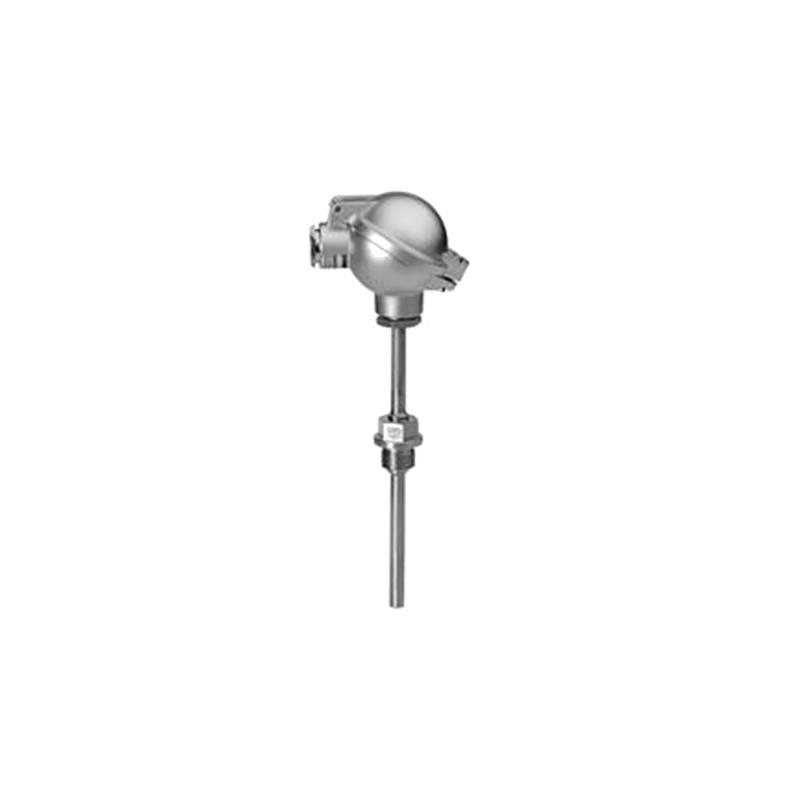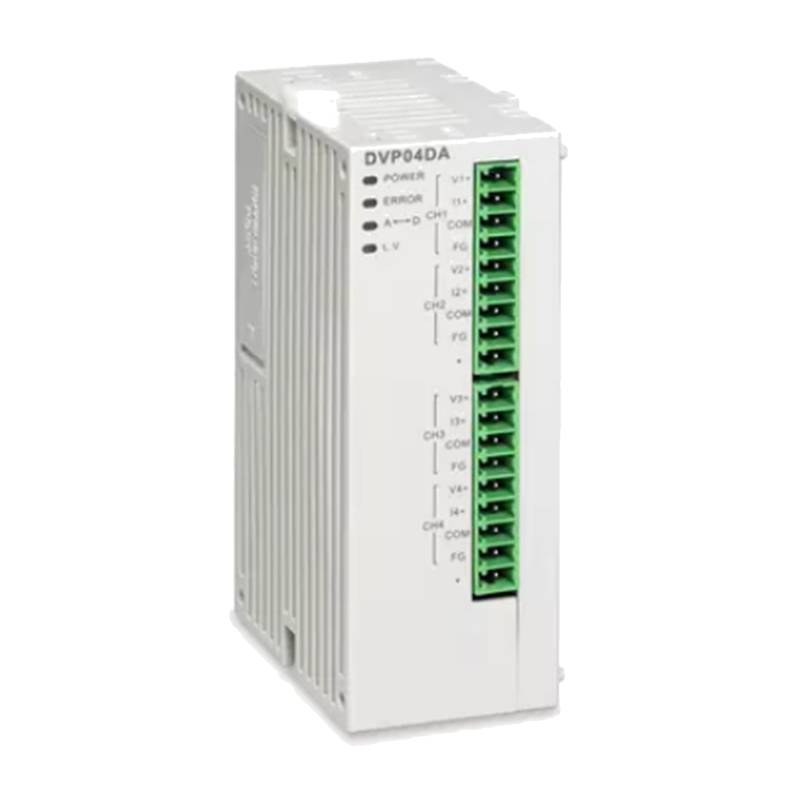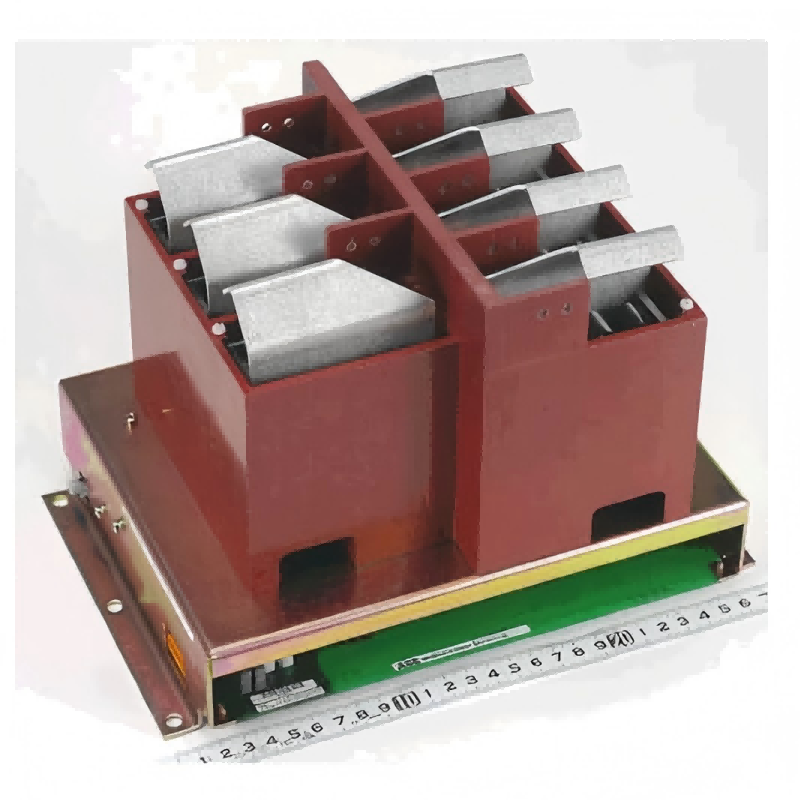
The Siemens BPZ:QAE3010.016 Pt100 Industrial Process Temperature Sensor is engineered for demanding environments, delivering precise and reliable temperature measurement critical for industrial automation and control. This sensor stands out with its robust construction, rapid response time, and high accuracy, ensuring optimal process efficiency and safety. Its core technical parameters include a wide operating temperature range from -50°C to +250°C, a Pt100 sensing element conforming to IEC 60751 Class A, and a 4-wire connection for enhanced measurement integrity. The 4-wire configuration minimizes lead wire resistance errors, guaranteeing superior accuracy even over long cable runs, a crucial advantage in large-scale industrial facilities.
Product Specifications
| Parameter | Specification |
| :----------------------- | :------------------------------------------ |
| Sensor Type | Pt100 |
| Accuracy Class | Class A (IEC 60751) |
| Temperature Range | -50°C to +250°C |
| Connection Type | 4-wire |
| Sheath Material | Stainless Steel (e.g., 1.4571/316Ti) |
| Ingress Protection | IP65/IP67 (depending on variant/fitting) |
| Response Time (T63) | < 15 seconds (typical in water) |
| Electrical Connection | Terminal head (e.g., Form B) |
| Process Connection | Threaded fitting (e.g., G 1/2") |
| Manufacturer | Siemens |
| Product Number | BPZ:QAE3010.016 |
Core Features & Market Positioning
The Siemens BPZ:QAE3010.016 distinguishes itself through its adherence to stringent industrial standards, offering a Class A Pt100 element that provides a foundation for highly accurate temperature readings. The inherent stability and linearity of Pt100 sensors, combined with Siemens' manufacturing expertise, position this device as a premium solution for critical control loops where even minor temperature deviations can impact product quality or operational safety. Its robust stainless steel sheath ensures longevity in corrosive or high-pressure environments, and the availability of various process connection types allows for versatile integration. This sensor is designed not just for measurement but for contributing to the overall reliability and efficiency of advanced industrial processes.
Key Application Scenarios
This temperature sensor finds indispensable application across a multitude of industrial sectors. In the chemical and petrochemical industries, it is vital for monitoring reaction temperatures, distillation processes, and storage tank levels, ensuring safe operating parameters. The food and beverage sector relies on the BPZ:QAE3010.016 for precise temperature control during pasteurization, sterilization, and cooking, guaranteeing product safety and quality. Furthermore, its durability makes it suitable for HVAC systems in large commercial buildings, power generation facilities for monitoring turbine and generator temperatures, and in the pharmaceutical industry for validating critical process steps. The 4-wire configuration is particularly beneficial in these applications where long cable runs are common and high measurement accuracy is paramount.
Practical System Integration Guidance
Integrating the Siemens BPZ:QAE3010.016 into an industrial control system typically involves connecting its 4-wire output to a compatible transmitter or directly to a PLC's analog input module designed for Pt100 sensors. The terminal head, often a Form B type, provides a secure housing for wiring. For optimal performance, ensure that the chosen transmitter or PLC input is configured for a Pt100 sensor and the appropriate range (-50°C to +250°C). The 4-wire setup inherently compensates for lead resistance, simplifying installation as the length of the extension wires has minimal impact on accuracy. Always ensure appropriate sealing at the process connection point (e.g., using thread sealant or a sealing washer) to maintain the system's integrity and the sensor's IP rating.
Operation and Risk Mitigation
Proper operation of the Siemens BPZ:QAE3010.016 hinges on adhering to its specified temperature limits and ensuring correct electrical connections. Exceeding the +250°C maximum operating temperature can lead to sensor drift or permanent damage. In environments with potential for vibration, consider using shock-absorbing mounting methods. Faults typically manifest as open circuits (infinite resistance), short circuits (very low resistance), or readings outside the expected range. These can often be diagnosed by checking the sensor's resistance at its terminals or at the transmitter input. Regular calibration checks, though less frequent due to Pt100 stability, are recommended for maintaining critical process control.
Scalability & Long-Term Value
The Siemens BPZ:QAE3010.016 offers significant long-term value due to its compatibility with a wide array of Siemens automation platforms, such as SIMATIC PLCs and HMI devices. Its standard Pt100 output ensures interoperability with most third-party transmitters and control systems that support this common sensor type. As industrial processes evolve towards digitalization and the Industrial Internet of Things (IIoT), this sensor's reliable data output is a foundational element for advanced analytics and predictive maintenance strategies. Its robust design minimizes replacement frequency, contributing to reduced total cost of ownership and ensuring consistent performance as systems are upgraded or expanded.
FAQs
What is the accuracy of the Siemens BPZ:QAE3010.016?
The Siemens BPZ:QAE3010.016 features a Class A Pt100 sensor element. This conforms to the IEC 60751 standard.
Class A accuracy ensures high precision for industrial applications. It means minimal deviation from the true temperature value.
This level of accuracy is critical for processes requiring tight temperature control and quality assurance.
What is the operating temperature range of this sensor?
This industrial temperature sensor operates effectively from -50°C up to +250°C. This broad range covers many common industrial processes.
The wide temperature coverage makes it suitable for diverse applications, from cryogenic to moderately high-temperature environments.
Users can rely on its performance across a significant spectrum of thermal conditions found in manufacturing.
How does the 4-wire connection benefit industrial use?
A 4-wire connection precisely compensates for lead wire resistance. This is vital for accurate measurements over long distances.
It eliminates errors caused by the resistance of the connecting cables. This ensures data integrity from sensor to controller.
This configuration is preferred in industrial settings where sensor placement may be far from the control panel.
What materials is the Siemens BPZ:QAE3010.016 made from?
The sensor typically features a durable stainless steel sheath. Materials like 1.4571 or 316Ti are common.
This robust construction provides excellent resistance to corrosion and mechanical stress. It ensures longevity in harsh industrial environments.
The process connection is usually a threaded fitting, commonly G 1/2", for secure installation.
Can this sensor be used in wet or dusty environments?
Yes, the BPZ:QAE3010.016 offers high ingress protection ratings. These often include IP65 or IP67.
These ratings signify protection against dust and water ingress. This ensures reliable operation even in challenging conditions.
Proper installation and sealing are essential to maintain these protection levels.
What type of process connection does the BPZ:QAE3010.016 have?
This sensor is commonly equipped with a threaded process connection. A standard G 1/2" thread is frequently utilized.
This threaded design allows for secure and leak-proof mounting into process equipment. It simplifies installation in pipes or vessels.
Other connection types might be available depending on the specific product variant or part number.
Is this Siemens sensor compatible with standard PLCs?
Absolutely, the Pt100 output is a universal standard. It interfaces with most programmable logic controllers (PLCs).
Ensure your PLC's analog input module is configured for Pt100 sensors. Verify the correct wiring for the 4-wire setup.
This compatibility simplifies integration into existing or new automation systems.
What is the typical response time for this Pt100 sensor?
The response time (T63) is typically under 15 seconds in water. This indicates a quick reaction to temperature changes.
Faster response times are crucial for dynamic processes that require immediate temperature adjustments.
The specific response time can vary slightly based on the sensor's immersion depth and the medium.
Where is the Siemens BPZ:QAE3010.016 commonly applied?
This sensor is widely used in chemical processing and food/beverage production. It's also found in HVAC and power generation.
Its versatility makes it suitable for applications demanding accurate and reliable temperature monitoring. It supports critical control loops.
Key sectors benefit from its robustness and precision in challenging thermal conditions.
How do I troubleshoot a faulty BPZ:QAE3010.016 sensor?
First, check the wiring for loose connections or shorts. Verify the sensor's resistance at the terminal head.
A healthy Pt100 should show resistance around 110 Ohms at 0°C. Use a multimeter for this check.
If resistance readings are abnormal or absent, the sensor may need replacement. Consult the technical documentation for specific fault codes.























